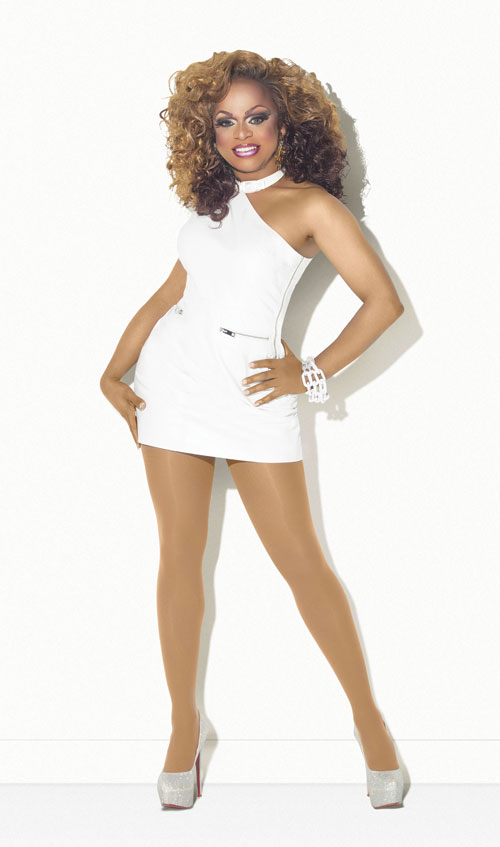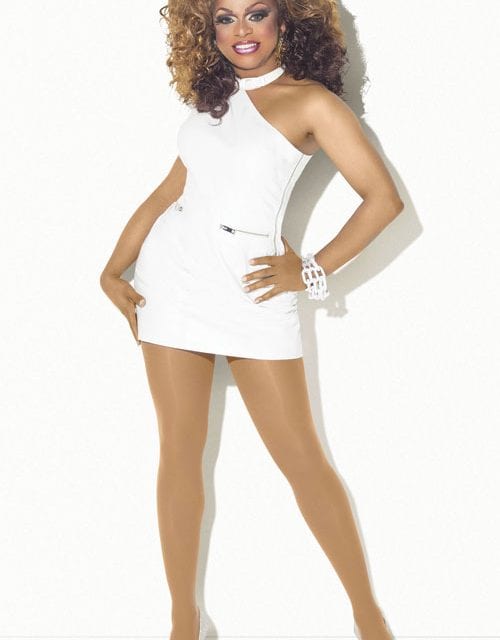When Kennedy Davenport’s drag sister Sahara passed away, she was devastated. But she turned her pain into resolve, following in Sahara’s stilettos on ‘Drag Race’

SHANTAY YOU STAY | Dallas queen Kennedy Davenport will make an in-person appearance at The Brick following the season premiere of ‘RuPaul’s Drag Race’ Monday.
ARNOLD WAYNE JONES | Executive Editor

Chiiillllllle!”
For all her glamour and runway style, at heart, Kennedy Davenport is just a country girl from Oak Cliff. Now in her 30s, she still lives in the same house she grew up in since before adolescence. She drawls her words with an unmistakable Texas twang. And she tells it like it is — behind all those wigs and eyelashes, she’s authentic. And she wants everyone to know it.
And soon everyone will, when she makes her national debut as one of the contestants on the upcoming season of the hit Logo competition series RuPaul’s Drag Race.
“I’m an open book and I don’t have any secrets — my whole life is a journey and the greatest thing that I experienced being on Drag Race was being able to share my truth … as an entertainer, and just as a human,” Kennedy says. “My life has not been a crystal chandelier. Dressing up and being beautiful is one thing, but when you crack that shell open and say, ‘I am human too,’ that’s the best thing that could happen.”
We don’t know officially how Kennedy fared on show, but considering that she’ll be making a personal appearance at The Brick this Monday following the season premiere, it’s reasonable to assume she didn’t get bumped Week 1. Indeed, her decision to do the show was a great leap of faith.
Kennedy was stationed in Miami after she enlisted in the Navy (she served three years, while Don’t Ask, Don’t Tell was still the law) and remained in Florida until she returned to Dallas to make drag her career. Being on the show definitely interfered with that.
“It’s a commitment,” she concedes, “especially if this is your livelihood. It was definitely a sacrifice. I took on this great responsibility after losing my father, and I am the guardian of my sister who is mentally retarded. Before I went on, I had to be sure she was OK. I was like, ‘Lawd, let’s make sure that water bill’s paid!’ My plate was really full so it was more than just to compete — it was my life.”
The question she kept asking herself was: Did she still want to perform to make her living? “Can I make this profitable for my future?”
And it almost didn’t happen at all. In many ways Kennedy would not be here had it not been for a tragic death that affected many Drag Race fans, but personally devastated Kennedy: The passing of a former contestant, Dallas’ Sahara Davenport.
“Kalexis is my drag mother and founder of Davenport; Sahara was my drag sister,” Kennedy explains. “To me, she was more than someone in the community — it was like she was my sister for real, like she was my blood. I was already doing drag before her, but it was like two little girls growing up. [When she died] it was more than just a loss; it hurt me dearly because I couldn’t get to her.”
Sahara’s own appearance on the show turned out to be a motivating factor for Kennedy.
“We both had the same goals as far as female impersonation goes — she wanted to be Miss USofA and I wanted to be Miss Gay USofA. I was really in my own world when she auditioned and in survival mode — trying to keep these bills paid, honey! So I didn’t have time to audition.”
After Sahara made it on, however, “she was like, ‘Sister, you gotta go ahead and put your tape in, girl.’ So to finally put forth the effort — I said, ‘Sahara I’m gonna do this for you.’ To step in the same footsteps as her and compete was just so surreal.”
What was most memorable about it?
“Chiiillllllle!” she says again. “You couldn’t put it into one word, honey — it was challenging, hard, fun, emotional, sooo tiring. It was like I was in high school all over again. I had to act and sing and dance and pull things out of me I haven’t used in years. It was fun to learn the different aesthetics and different styles of drag. I developed real relationships with a lot of the girls — some I was closer to than others, but I think we all developed great relationships.”
One thing she was especially happy about when she arrived? Santino Rice was off the show as a judge.
“I can truly say I was slightly relieved Santino wasn’t there. Santino was a person who did not know about the art of female impersonation. So to have experienced Carson [Kressley] and Ross [Mathews] was exciting.”
Equally exciting is how being on the show is a way of paying it forward — as Sahara did for her.
“Having that platform [] to express my journey gave me every opportunity to tell the whole world who I am and what I’ve been through,” she says. “This is the chance for us to be leaders, to let the younger generation know whatever they are going through? We’ve already been there.”
This article appeared in the Dallas Voice print edition February 27, 2015.

